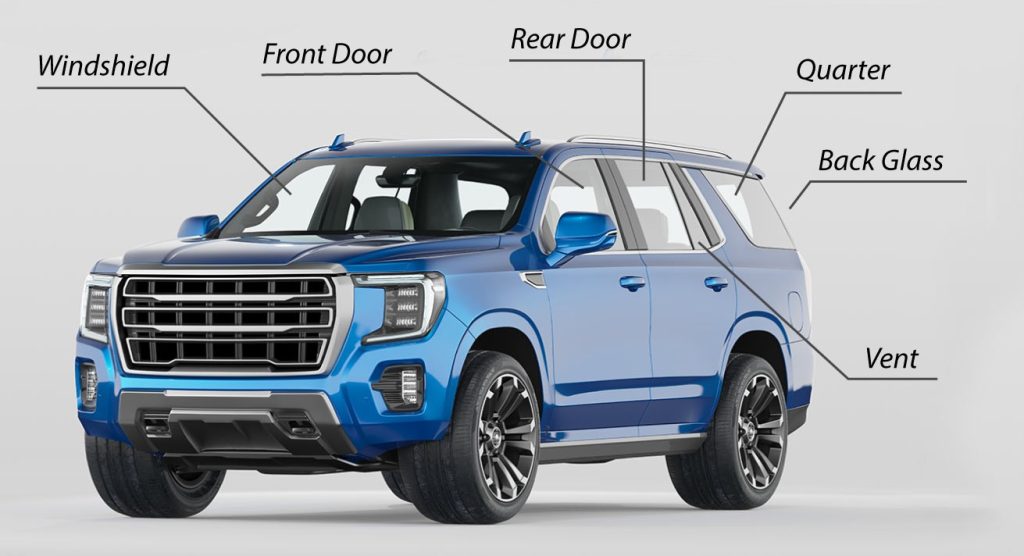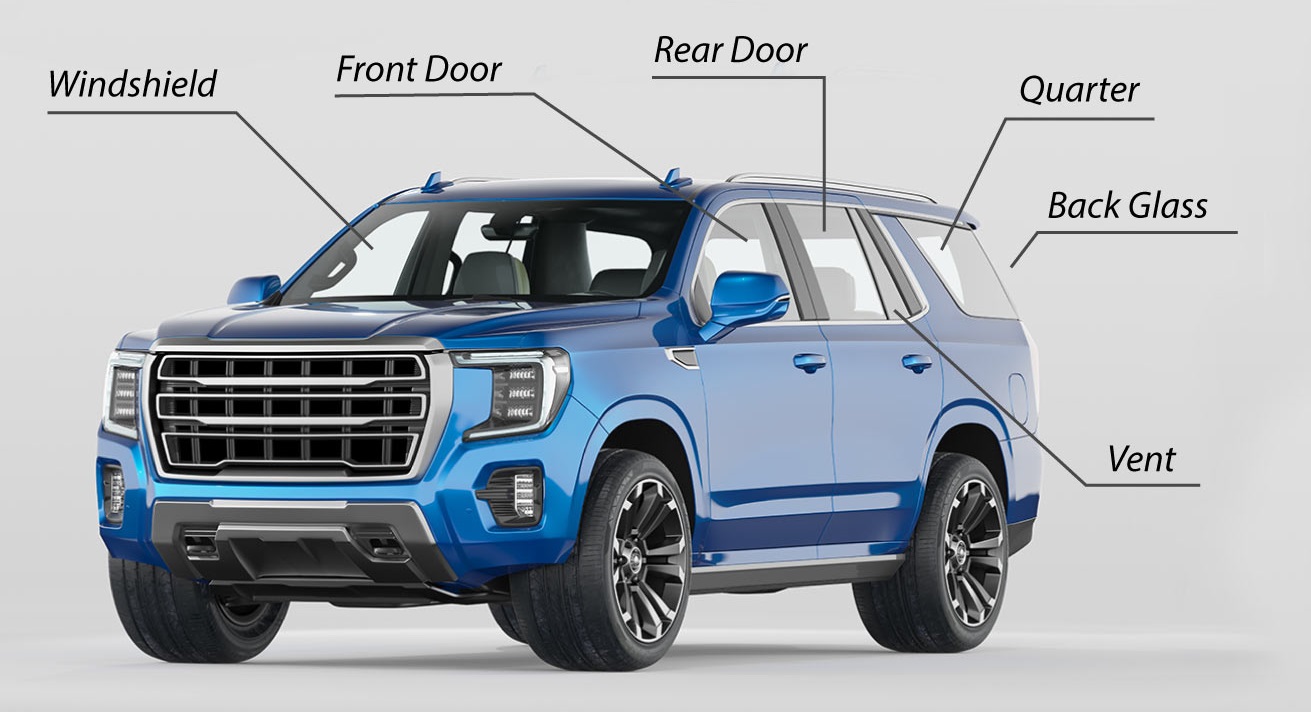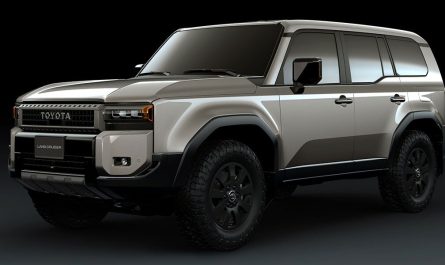When it comes to replacing your windshield, choosing the right type of glass is crucial for your safety, comfort, and driving experience. Not all windshield glass is created equal, and the option you pick can affect your vehicle’s performance, as well as how much you’ll pay for the replacement. Here’s everything you need to know about the different types of windshield glass available and which one you should choose.

Types of Windshield Glass
There are primarily two types of windshield glass that you can buy: Original Equipment Manufacturer (OEM) glass and Aftermarket glass. Each has its own pros and cons, and the right choice depends on your specific needs, budget, and vehicle type.
1. Original Equipment Manufacturer (OEM) Glass
OEM glass is produced by the same company that made the original windshield in your vehicle when it was first manufactured. Here’s what you need to know:
- Fit and Quality: OEM glass is designed to be an exact replica of your original windshield. It will fit perfectly, provide the same thickness, and offer the same durability. If you want to maintain your car’s original structural integrity, OEM glass is the best choice.
- Features: Many modern vehicles come with advanced features like rain sensors, heads-up displays, lane departure warning systems, or defrosting elements. OEM glass is made to work seamlessly with these built-in features.
- Price: OEM glass tends to be more expensive than aftermarket glass. However, the higher cost reflects the quality and precision it offers. If you’re not willing to compromise on the safety and functionality of your vehicle, the extra investment may be worth it.
- Warranty: OEM glass often comes with a warranty that covers defects in materials and workmanship. Since this glass is made by the same manufacturer as your vehicle’s original parts, it tends to have a higher assurance of quality.
2. Aftermarket Windshield Glass
Aftermarket glass is produced by third-party companies that manufacture windshields based on the specifications of different vehicles. However, these windshields are not identical to the original and may differ slightly in terms of thickness, durability, or design.
- Cost: One of the biggest advantages of aftermarket glass is that it’s typically more affordable than OEM glass. If you’re looking for a cheap windshield replacement, aftermarket glass can be a more budget-friendly option.
- Quality: While many aftermarket windshields meet safety standards, the quality can vary depending on the manufacturer. Some aftermarket glass may not match the same level of fit, thickness, or clarity as OEM glass, which can affect visibility or durability over time.
- Fit and Compatibility: Although aftermarket glass is designed to fit your car, it may not always be an exact match. Some consumers report that aftermarket windshields can result in increased noise or improper functioning of sensors.
- Features: Not all aftermarket windshields will support the advanced features of modern vehicles, such as heads-up displays or rain sensors. Before purchasing aftermarket glass, ensure that it can work with your vehicle’s technology.
Other Factors to Consider When Buying Windshield Glass
In addition to deciding between OEM and aftermarket glass, there are other important factors to consider:
1. Laminated vs. Tempered Glass
- Laminated Glass: The vast majority of windshields are made from laminated glass, which consists of two layers of glass with a layer of plastic in between. This construction helps the windshield stay intact during a collision, providing better protection for passengers. Laminated glass also helps block harmful UV rays and reduces noise inside the cabin.
- Tempered Glass: Some cars use tempered glass for side and rear windows, but it’s not common for windshields. Tempered glass is much stronger than regular glass and shatters into small, harmless pieces when broken. While not typically used for windshields, it’s a durable option if you’re replacing other types of auto glass.
2. Safety and Certification
When choosing a windshield, always ensure it meets Federal Motor Vehicle Safety Standards (FMVSS). This certification ensures that the glass has been tested for safety, durability, and performance. Always buy glass from a reputable manufacturer that complies with these safety regulations.
3. Special Features
If your car comes equipped with special features such as automatic rain sensors, heated windshields, or heads-up display, ensure the new windshield is compatible with these functions. Not all glass will support these technologies, so confirm the specifications with the supplier before purchasing.
4. Warranty
When replacing your windshield, consider the warranty offered by the glass manufacturer and the installation company. A good warranty can give you peace of mind in case of defects or installation errors. OEM glass generally comes with a warranty that covers both the product and installation, whereas warranties for aftermarket glass can vary.
Which Type of Windshield Should You Buy?
Choosing between OEM and aftermarket glass largely depends on your specific situation, including your budget, vehicle model, and driving needs. Here’s a quick guide to help you decide:
- Choose OEM Glass If:
- You want the best possible fit and quality.
- Your car has advanced features like heads-up displays, rain sensors, or heated windshields.
- You’re willing to spend a little more to maintain your vehicle’s original specifications.
- Choose Aftermarket Glass If:
- You’re looking for a cheap windshield replacement.
- You don’t mind minor differences in thickness, fit, or design.
- Your vehicle doesn’t have advanced features that require specialized glass.
Where to Buy Windshield Glass?
If you need a replacement, search for auto glass near me to find a reliable and professional shop that can help you choose the right windshield for your vehicle. Whether you go with OEM or aftermarket glass, it’s important to work with experienced technicians who can install your windshield properly and ensure your safety on the road.
Conclusion
When buying a new windshield, it’s essential to consider both the type of glass and the features it supports. Whether you choose OEM or aftermarket glass depends on your budget and your vehicle’s specific needs. Regardless of your choice, always prioritize safety and ensure that your windshield meets federal standards. For professional advice and installation, search for auto glass near me to find a shop that offers quality service and products.




